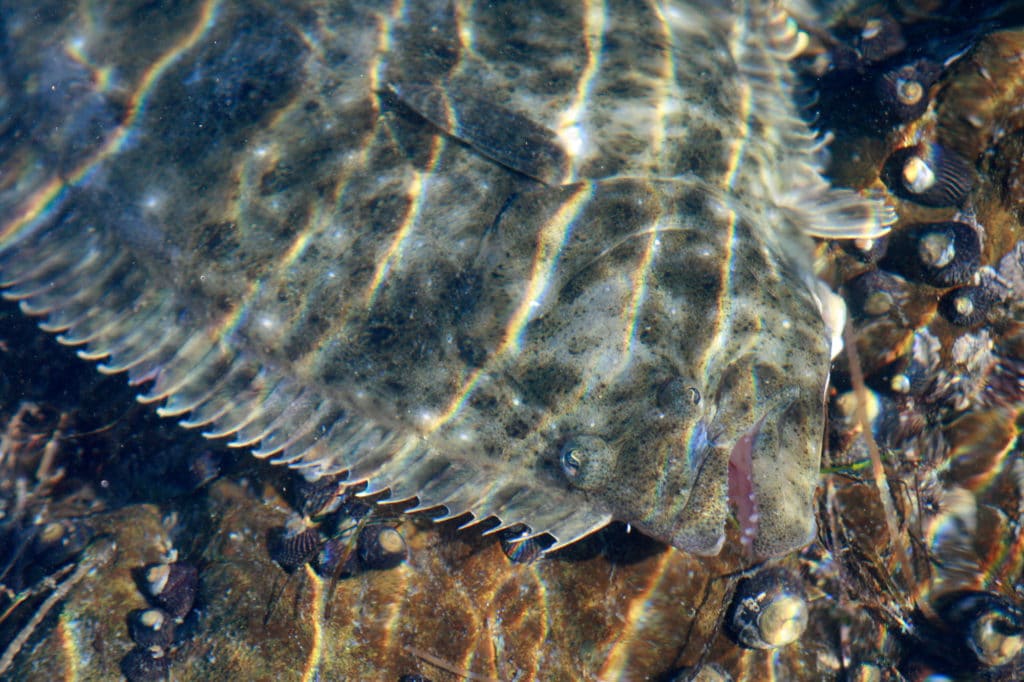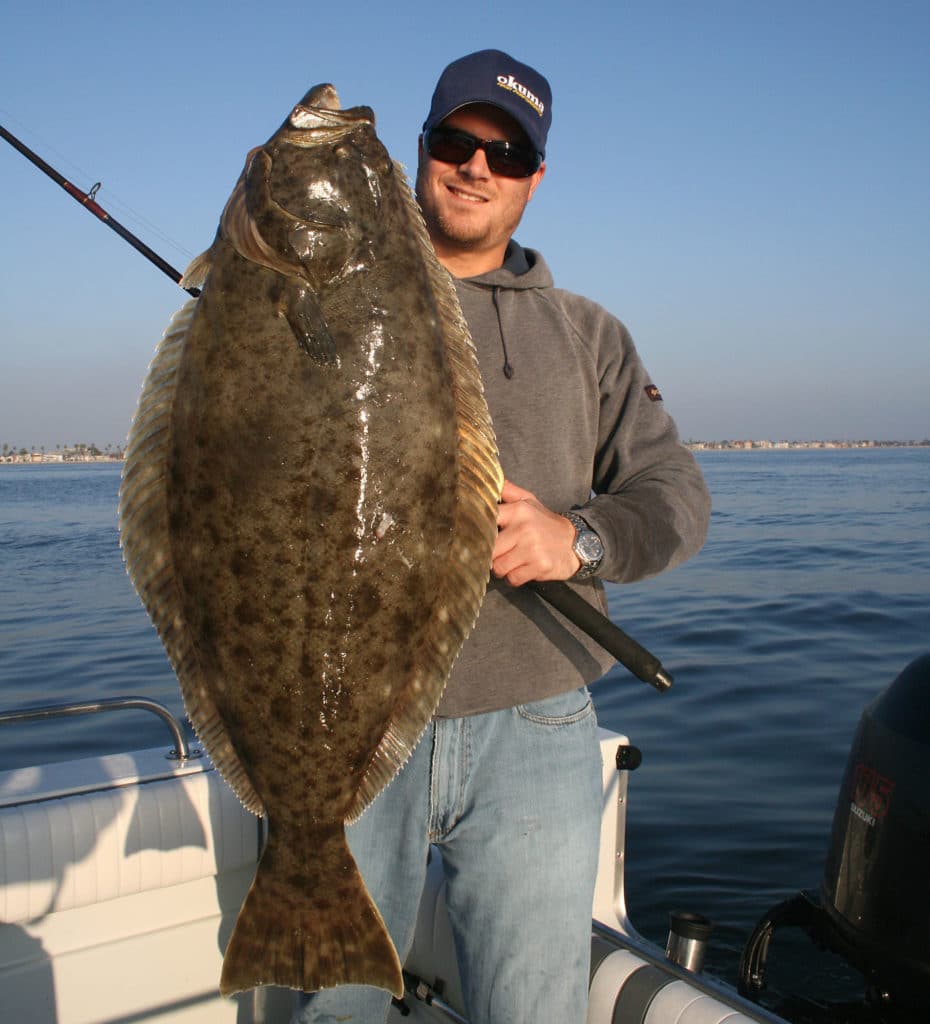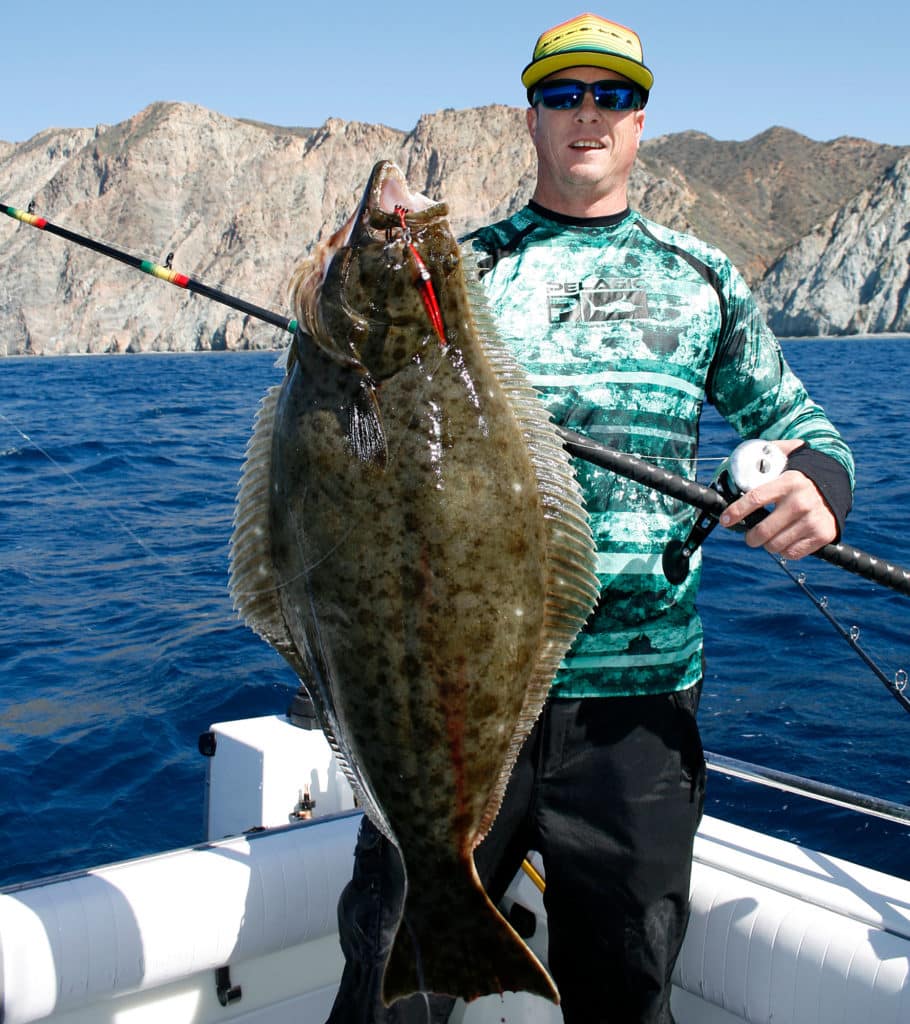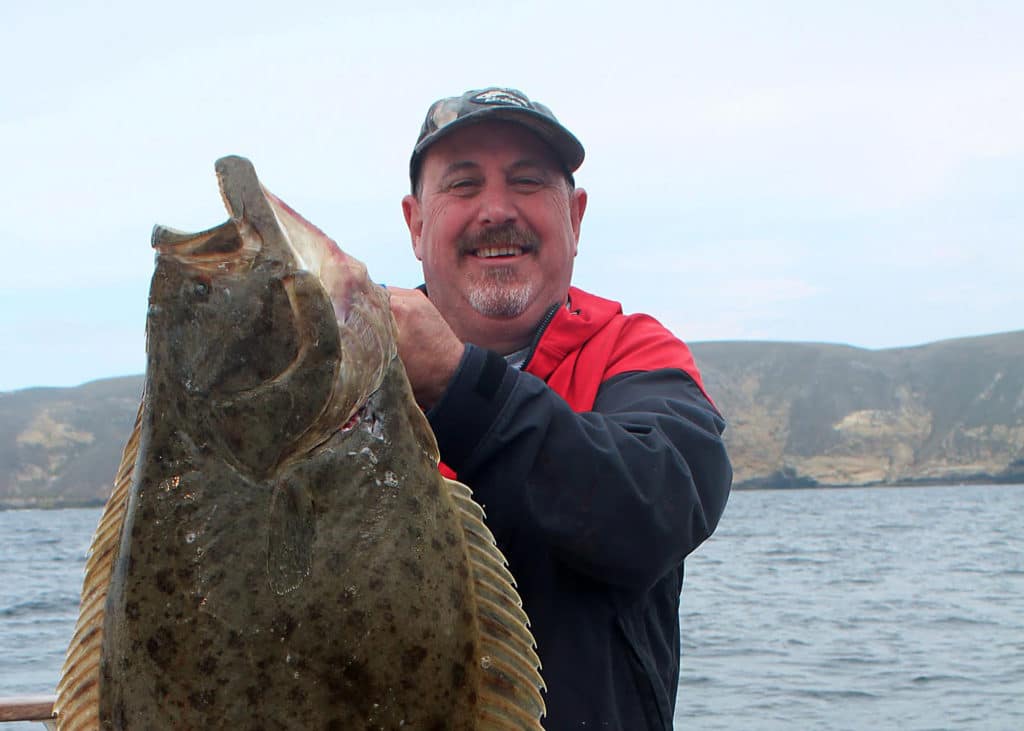California halibut might lack the respect of their neighbors to the north — Pacific halibut — but this species fights hard and eats good.
Jim Hendricks
When it comes to halibut, Alaska grabs most of the attention. But another halibut fishery thrives in the lower 48, farther down the Pacific coast; it’s one that many traveling anglers overlook: California halibut.
Though this species doesn’t grow nearly as large as the Pacific halibut that swims in Alaska, the Golden State flatfish can be quite a rod bender. In addition, the California species (Paralichthys californicus) possesses more of an oval body shape than the Pacific halibut (Hippoglossus stenolepis), which has a body more akin to an elongated diamond. The posterior of the California halibut’s tail fin also features a mild “W” shape.
The California species largely inhabits the ocean waters off the Golden State and northern Baja California and is rare in the Pacific Northwest. In contrast, Pacific halibut are only occasionally caught in waters off of California; they’re found most often off of Washington, British Columbia and Alaska.
The International Game Fish Association all-tackle record 67-pound-5-ounce California halibut came from Santa Rosa Island off the coast of Southern California. An even larger ’but — weighing 72 pounds, 8 ounces — was captured at California’s Santa Cruz Island by a spearfisherman.
Just like Pacific halibut in Alaska, the California version makes great tablefare. California halibut inhabit a wide range of depths along the coast and offshore islands—from the surf zone to 200 feet or more. These fish attack live baits and lures, and can stage powerful runs and head-shaking battles.
Read Next: Fishing the Bays of Southern California
Peak seasons differ by region. In southern California, anglers focus on spring and fall. In the Channel Islands, June and July top the list. In San Francisco, June is the prime month.
Here are six of the top spots from south to north where you stand a good chance of catching California halibut, and most of them are within easy reach of boating anglers.
The ocean waters off of Southern California account for some of the biggest California halibut on record. This fish weighed 35 pounds, but these flatties can grow to twice that size.
Jim Hendricks
San Diego Bay
Anglers work soft-plastic lures and jigs and drift live sardines along the bottom for these ambush-feeding halibut. San Diego, which encompasses nearly 19 square miles of rich tidal waters, offers prime habitat for the predatory California ’buts. Many anglers find success along the current-washed shoulders of channels and the edges of eel-grass beds.
Doug Olander
Long Beach/Los Angeles Harbor
The adjoining Los Angeles and Long Beach harbors include more than 6 square miles of tide-water habitat inside the 8.3-mile-long Federal Breakwater that protects this area from heavy seas. An abundance of rocky habitat next to sand/mud bottoms, as well as channel edges, provide prime ambush points for California halibut.
Jim Hendricks
Santa Catalina Island
Look for California halibut along the many sandy beaches and edges of kelp beds that flourish along the shores of the famous 22-mile-long Santa Catalina Island off the coast of Southern California. While some anglers target halibut here, many are caught incidentally while pursuing other species such as white seabass.
Jim Hendricks
Santa Catalina Island
California halibut at Santa Catalina Island will strike jigs, soft plastic lures and live baits, including Pacific mackerel, sardines and opalescent squid. While halibut often lie in ambush, they can also actively hunt for prey when currents sweep the island’s shores.
Jim Hendricks
Santa Monica Bay
This mouth of this immense, sweeping bay off of Los Angeles stretches from Point Dume to Point Vicente, and is traditionally one of the most productive fisheries for California halibut in SoCal. In spring and fall, California move on to sand/mud flats to spawn, and this often leads to a fishing bonanza.
Jim Hendricks
Santa Monica Bay
Santa Monica Bay is known for large California halibut, including a 50-pounder that set a 16-pound-test line-class record. These fish stage a vertical fight that’s often punctuated by an initial powerful run and violent headshakes. As the fish nears the boat, it uncorks a final downward burst of speed.
Ron Ballanti
Channel Islands
For trophy California halibut, the Channel Islands off of Ventura and Santa Barbara counties are the place to go. The current all-tackle world record of 67 pounds, 5 ounces was caught at Santa Rosa Island in 2011, and seven line-class records emanated from these islands. June and July rank as the best months to pursue giant California halibut here as the fish move in to feed on the spawning schools of opalescent squid.
Ron Ballanti
San Francisco Bay
June is prime time for California halibut in the turbid waters of San Francisco Bay. This is when big numbers of the flatfish move in to feast on massive school of anchovies. While anglers in Southern California look for strong tidal flow, San Francisco anglers prefer the opposite. Weak tides enable anglers to more effectively drift fish with live baits along the bottom.
Ron Ballanti


















